Cultural
Tourism
Our Cultural Tourism segment invites you to experience the living culture of the Lisu community firsthand. Learn about significant cultural heritage sites and embark on virtual tours that showcase the breathtaking landscapes and architectural marvels unique to Nujiang. Gain insights into Lisu cultural experiences, eco-tourism routes, local cuisine, and practical travel tips. Whether you plan a visit or wish to explore remotely, this section provides comprehensive guides, inspiring travel stories, and connections to authentic cultural encounters.
文旅

Cultural
Heritage Sites
Eco-Tourism
Routes
Local
Cuisine
Custumes
and Crafts
Travel Info
and Guide
Costumes and Crafts
Lisu Ethnic Clothing
Lisu clothing varies by region. In northern Gongshan and Fugong, Lisu women wear the Oule Cap, a headpiece adorned with shells, beads, small sea snail discs, and brass buttons. They pair this with a fitted, right-buttoned blouse in light blue, green, or white, layered over a deep-colored jacket in blue, red, or black, creating a striking contrast. Around their necks, they wear elaborate strings of beads called "Labenlidi", made from shells, beads, silver coins, sea snail discs, and agate.
In Lanping, southern Fugong, and Lushui, Lisu women opt for a simpler style: a right-buttoned blouse, long pants, and a waist apron, with a black or dark blue headscarf, exuding understated elegance.
Lisu men’s attire is more uniform, typically featuring a black or blue headscarf. They wear a close-fitting hemp shirt under a long, open-front hemp robe, tied at the waist with a woven belt sometimes decorated with shells or beads. Their wide hemp trousers reach just below the knees, completing the traditional look.

_JPG.jpg)


Traditional Attire of the Lemo People
The clothing of the Lemo people, both men and women, is relatively simple yet distinctive. Men typically wear a large turban adorned with seashells, with tassels hanging on the right side. Their long robes, called "Daoen," are made from finely woven white hemp fabric. These robes feature round collars and hems embroidered with colorful patterns, and black cloth is sewn around the cuffs. Two strips of black cloth are also stitched along the spine, extending from the waist to the shoulder blades. (In regions like Ega and Baodeng, the turban and back strips are omitted, and only the cuffs are adorned with black or striped cloth.) At first glance, the attire may resemble that of Lisu men, but key differences exist.
Lisu men’s robes lack embroidered patterns on the collars and hems, and instead of large black strips on the back, they have a small piece of black cloth sewn under the armpit, symbolizing a hiding place for the soul. These subtle variations highlight the unique cultural identity of the Lemo people.
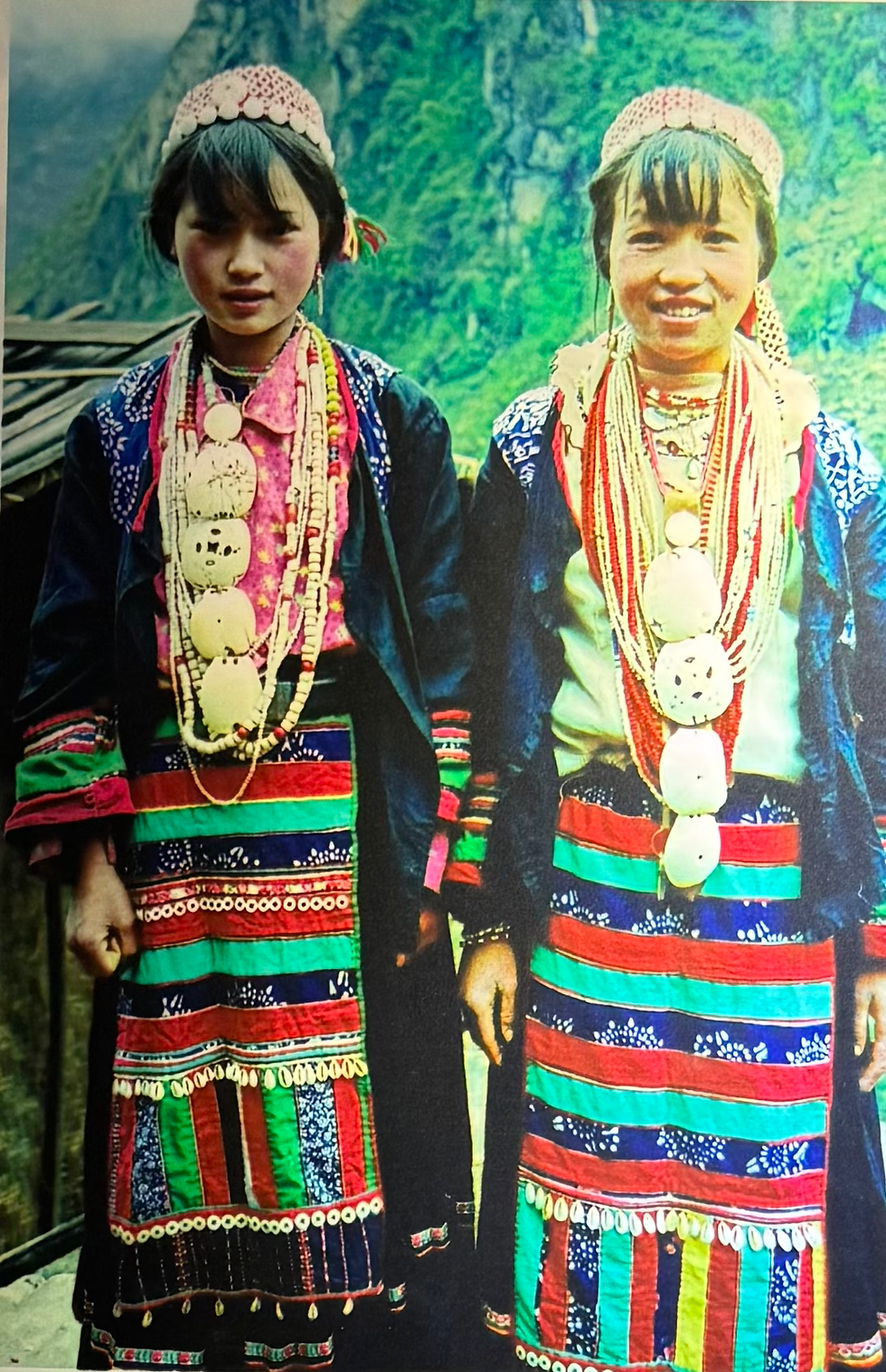
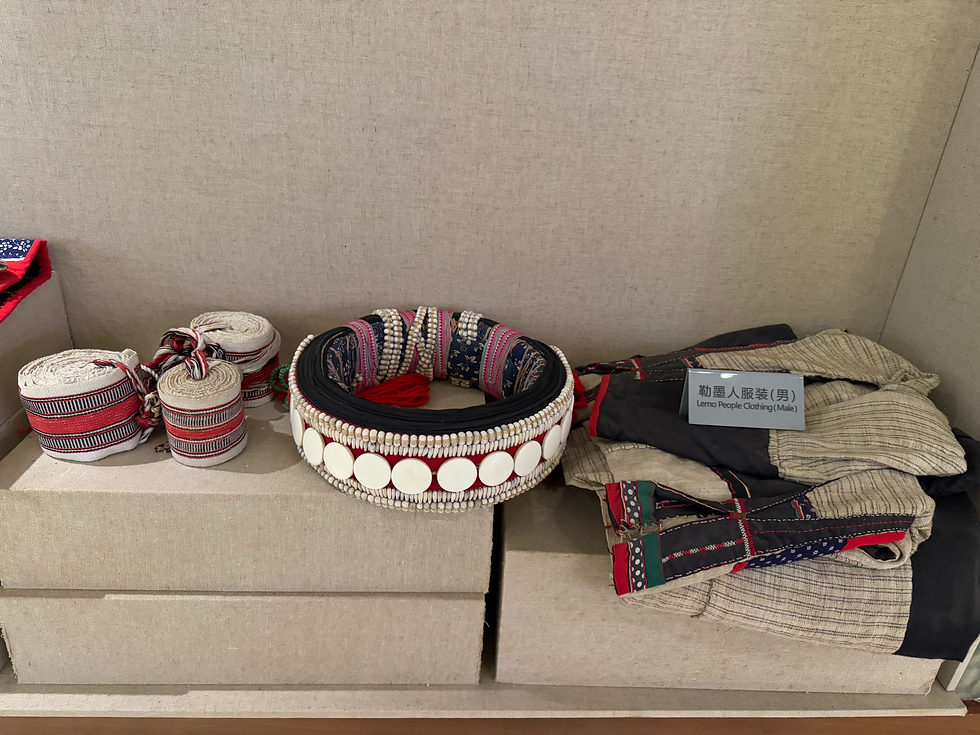
Cultural Heritage Sites
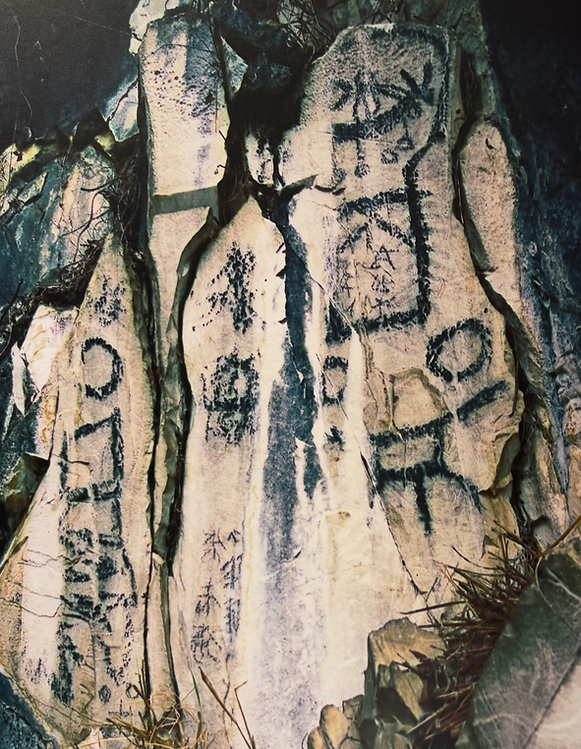
Ancient Cave Paintings 古代岩画
Cave paintings are a form of prehistoric culture, created by early humans using stone tools to depict and record their ways of life and production. These primitive, natural artworks represent some of the earliest cultural expressions of human society and serve as invaluable heritage left by our ancestors.
In the 1980s, the first cave paintings were discovered in the Nujiang region. These paintings can be categorized into three styles: the Wufu Cave paintings, the Lasidi paintings, and the Gudeng paintings. They primarily feature images of animals, tools, and human figures, found in caves and on cliffs near riverbanks where early human activities took place.
Among them, the Lasidi cave paintings, created later than the Wufu Cave paintings, reflect a more advanced style. Composed of over 300 symbols and characters, they document natural phenomena, daily life, social interactions, and technological innovations of the time. Notably, the dense circles in the Lasidi cave paintings, representing "sky spirits" (stars) in Nu legends, record various astronomical phenomena observed by ancient people.
These cave paintings offer a fascinating glimpse into the early cultural and intellectual achievements of the region's inhabitants.

Church 教堂
Over a century ago, waves of Western missionaries traversed the snow-capped Biluo Snow Mountain to bring the Gospel to the Nujiang Grand Canyon. Since then, a multitude of magnificent Western-style religious structures have emerged across Nujiang. Churches such as Laomudeng, Chongding, and Baihanluo stand as exquisite architectural masterpieces, their stories of history and emotion illuminated by the sun. The image of God and His message have become deeply rooted in the souls of the Nujiang people. Each evening, as the gentle southern breeze sweeps through the canyon, the churches resonate with pure, sacred hymns—devout praises and tributes from the spiritual hearts of the community. These churches not only serve as places of worship but also as enduring symbols of faith and cultural exchange in this remote and majestic region.

Puhua Temple 普华寺
It is located in Jiasheng Village, Bingzhongluo Township, Gongshan County, was originally established in 1825 during the Qing Dynasty. Its predecessor, the Changputong Feilai Temple, was built in 1766 and later became one of the thirteen major Tibetan Buddhist monasteries under the jurisdiction of Lijiang Prefecture. The original Puhua Temple covered an area of over 3,000 square meters, featuring a west-facing layout that followed the terrain's natural slope. Its structure, a blend of earthen walls, wooden frames, and stone-tile roofing, was arranged in a T-shaped plan, creating a rich sense of layering. The current temple complex includes a main hall, living quarters for the living Buddha, monk dormitories, and storage rooms. The main hall houses murals depicting Buddhist stories and figures, while the doors and windows are adorned with intricate Tibetan-style carvings. As the only lamasery in Nujiang Prefecture, Puhua Temple stands out for its grandeur and unique architectural style. It is now a protected cultural heritage site of Nujiang Prefecture.

ZhiZiluo City of Memory 记忆之城 知子罗
Zhiziluo,located in the Pihe Nu Ethnic Township of Fugong County, Nujiang Lisu Autonomous Prefecture, sits at an elevation of 2,023 meters on the Biluo Snow Mountain. Once a vital post on the ancient Tea-Horse Road, it connected Lanping, Fugong, Gongshan, and Lushui. Beginning in 1912, it served as a colonial administrative center and later a governance bureau. After liberation, it became a core city in the Nujiang region and a crucial hub for exchanges between Nujiang and inland China.
However, its prominence declined with the construction of modern roads. In 1973, the prefectural capital moved to Liuku Town, and in 1986, due to landslide risks, Bijiang County was dissolved, leading to the partial demolition of the town. Today, it is home to over 800 farmers and retirees. Zhiziluo retains its layout and architectural style from the 1970s and 1980s, with octagonal towers and white-walled brick buildings evoking memories of the past. Time seems to stand still here, earning it the name "City of Memory," a place where history is preserved, encapsulating a bygone era of glory.

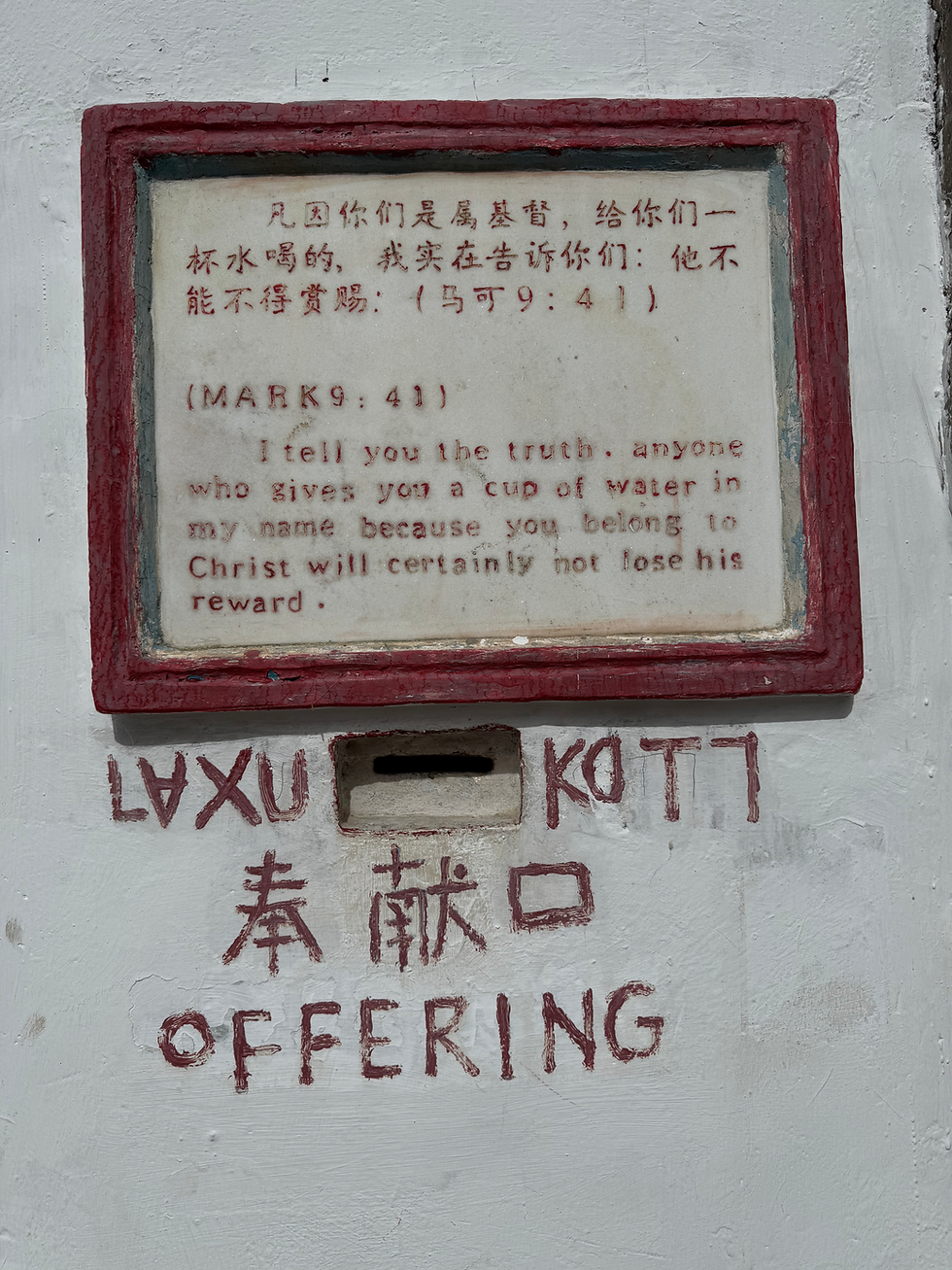
Eco-Tourism Routes

Qilian Lakes 七莲湖
Located on the Biluo Snow Mountain in Pianma Township, Fugong County, Nujiang Lisu Autonomous Prefecture, Yunnan Province, the Qilian Lakes sit at an altitude of approximately 3,800 meters. This area is home to the largest group of alpine glacial lakes on Biluo Snow Mountain, consisting of seven small lakes arranged in a stunning pattern resembling seven lotus flowers blooming on the snowy peaks, hence the name "Qilian" (Seven Lotuses).
The lakes are fed by melting snow and ice, their crystal-clear waters reflecting the surrounding landscape like a mirror. Encircled by snow-capped mountains, dense forests, meadows, and vibrant flower fields, the Qilian Lakes are particularly breathtaking in spring and summer when a variety of flowers, including rhododendrons, bloom in abundance, creating a picturesque contrast with the emerald-green waters. The weather here is ever-changing, adding an ethereal, almost mystical quality to the scenery.
In the culture of the local Nu ethnic group, the Qilian Lakes are considered sacred, believed to be the place where fairies descended to bathe. The lakes hold deep spiritual significance as a pilgrimage site, symbolizing the Nu people's aspirations for a beautiful and harmonious life. This blend of natural splendor and cultural reverence makes the Qilian Lakes a truly enchanting destination.

Bingzhongluo 丙中洛
Bingzhongluo, located in Gongshan County along the Nujiang River, is celebrated as a "land where humans and deities coexist." It serves as the starting point of the "Bing-Cha-Cha" route, a renowned southern path connecting Yunnan and Tibet. This region is a harmonious blend of diverse ethnic groups and religions, offering a unique cultural experience.
Bingzhongluo boasts several must-visit destinations for in-depth exploration. Gongdang Sacred Mountain, within the Bingzhongluo Scenic Area, provides a panoramic view of the entire region and the First Bend of the Nujiang River from its summit. Qiunatong, the last village in Yunnan before entering Tibet, is a settlement of the Nu ethnic group, surrounded by stunning alpine pastures where visitors can witness sea of clouds and snow-capped mountains. The Alulaka Pasture is an ideal spot for off-road adventures and hiking. Additionally, travelers can explore ancient villages like Wuli, experience the thrill of crossing rivers on traditional zip lines, and immerse themselves in the simplicity of local life and pristine natural landscapes.

Peacock Mountain 孔雀山
Located at the border between Gongshan County in Nujiang Lisu Autonomous Prefecture and Deqin County in Diqing Tibetan Autonomous Prefecture, Yunnan Province, Peacock Mountain is named for its resemblance to a spreading peacock. Its main peak rises to an elevation of 4,400 meters, exuding an aura of mystery and tranquility.
The mountain offers distinct seasonal landscapes. In winter, it is a majestic expanse of snow-covered forests; in spring, lingering snow contrasts with the mountain hues and sunset glow; in summer, the slopes are adorned with blooming rhododendrons; and in autumn, the foliage transforms into a vibrant tapestry of colors. The best vantage point is the Peacock Mountain Pass at 3,882 meters, where visitors can enjoy panoramic views of the mountain, surrounding sacred lakes, and the peaks of the Meili Snow Mountain range, including the iconic Kawagarbo. This spot is also ideal for capturing the breathtaking spectacle of the "sunlight turning the mountains golden."
For hiking enthusiasts, Peacock Mountain offers a variety of trails to explore. Beginners and families can enjoy a gentle 5-kilometer loop, while more experienced hikers can embark on the 11-kilometer Tongtian Lake Loop, which provides stunning views of Meili Snow Mountain. Along the way, hikers will traverse lush primeval forests, serene mirror-like lakes, and sparkling alpine tarns, immersing themselves in the area's pristine natural beauty. Peacock Mountain is a destination that promises unforgettable adventures and awe-inspiring scenery.

Nujiang Grand Canyon 怒江
The Nujiang Grand Canyon, renowned as the "Oriental Grand Canyon," stretches over 450 kilometers from Chawalong in Zayü County, Tibet, in the north, to Liuku, the capital of the Nujiang Lisu Autonomous Prefecture in Yunnan Province, in the south. It is celebrated as one of the world's three great canyons, alongside the Colorado Grand Canyon and the Yarlung Tsangpo Grand Canyon. The canyon is characterized by its profound depth, with towering mountains on either side and an average depth exceeding 2,000 meters, reaching a maximum depth of 3,478 meters. The roaring Nujiang River surges through the canyon, creating a majestic spectacle. Visitors can embark on boat rides to experience the river's powerful currents or trek through pristine forests to encounter rare flora and fauna, uncovering the canyon's hidden mysteries.
A highlight of the canyon is the First Bend of Nujiang, a landmark scenic spot located near Ridan Village in Bingzhongluo Township, Gongshan County, Yunnan Province. Here, the river forms a dramatic semi-circular bend due to the imposing cliffs of Wangqing. Within this bend lies Kantong Village, a picturesque haven reminiscent of a secluded paradise, offering stunning rural landscapes. From the observation deck on Gongdang Sacred Mountain, visitors can take in the breathtaking panorama of the First Bend of Nujiang and the Bingzhongluo Basin, with distant rolling hills and the winding river below, creating a serene and awe-inspiring experience.

Dulong River 独龙江
The Dulong River, located in Gongshan Dulong and Nu Autonomous County, Yunnan Province, is a vital part of the "Four Parallel Rivers" in the western Hengduan Mountains. Named after the Dulong ethnic group who have inhabited the area for generations, it is often referred to as a "natural museum of wild plants" and remains one of China's most pristine and ecologically intact regions. The area is characterized by towering snow-capped mountains, steep gorges, and the majestic Dandanglika and Gaoligong mountain ranges standing in dramatic opposition, offering breathtaking landscapes at high altitudes.
Starting from Gongshan County along the central route, visitors can pass through the Heiwadi service point and the Dimopa Viewing Platform, where they can admire mist-shrouded peaks and ancient hemlock stumps. The northern route leads to Longyuan and Xiongdang villages, where travelers can encounter the enigmatic tattooed women of the Dulong ethnic group and explore their unique cultural heritage. The southern route features the stunning scenery of Pukawang Village and the Hapong Waterfall, culminating at the No. 41 Boundary Marker on the China-Myanmar border.
The tattooed women of the Dulong ethnic group are a living testament to an ancient tradition, with only a few remaining individuals preserving this unique historical legacy. The Dulong people also possess a distinct language, vibrant songs and dances, and the iconic "Biaoniu Dance," all of which reflect their deep reverence for nature and their rich cultural identity.
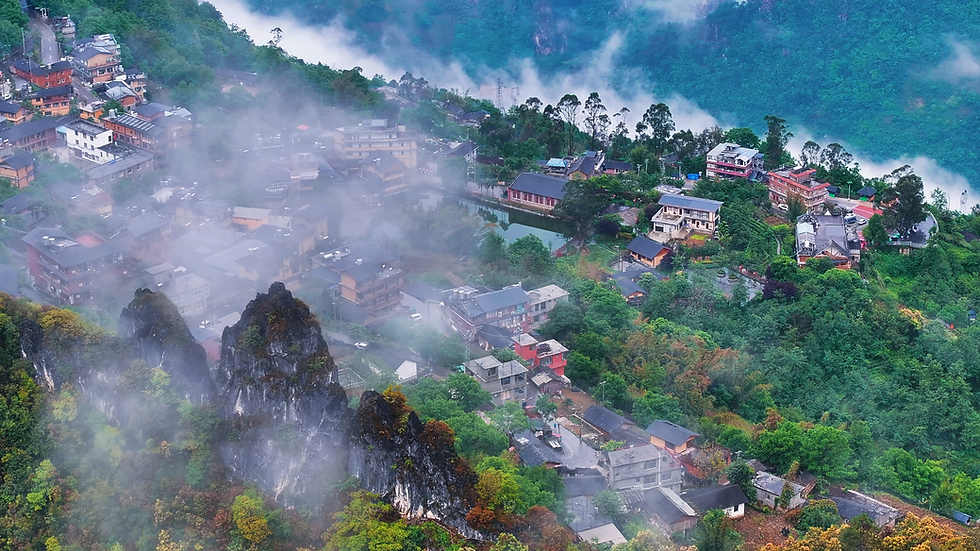
Laomudeng Village 老姆登村
Laomudeng Village, located in the eastern part of Pianma Township, Fugong County, Nujiang Prefecture, Yunnan Province, is a national 4A-level scenic area. The name "Laomudeng" means "a place people love to visit" in the Nu ethnic language, and it is an exceptional location to admire the dramatic landscapes of the Nujiang Grand Canyon. From the village’s viewing platform, visitors can take in the majestic Crown Mountain, which resembles a royal crown, and the breathtaking vistas of the canyon.
The village is home to Laomudeng Church, the largest Christian church in the Nujiang region. Its simple architecture and profound spiritual atmosphere reflect the deep faith of the local community. Nearby attractions include the Shiyueliang (Stone Moon) Viewing Platform, alpine glacial lakes, and the historic town of Zhiziluo, known as the "City of Memory," which preserves rich cultural and historical heritage.
Visitors can also immerse themselves in the unique culture of the Nu ethnic group by experiencing traditional folk songs, the Guake dance, and savoring local delicacies such as Laomudeng tea, roasted suckling pig, and Nu-style hand-grabbed rice. This blend of natural beauty, cultural richness, and authentic experiences makes Laomudeng Village a must-visit destination.
Local Cuisine

Xiala: A Flavorful Delicacy of Nujiang 侠拉
"Xiala," a dish brimming with the unique charm of Nujiang, is a culinary treasure deeply rooted in the region's ethnic culture. The name "Xiala" comes from the local ethnic language, translating to "wine-cooked chicken" in Chinese. Some locals affectionately call it "soul-warming chicken soup."
To prepare Xiala, a locally sourced free-range chicken is cleaned and cut into small pieces. A heated iron pot over a hearth is used to melt lacquer oil, which is then brought to the right temperature before the chicken pieces are added and stir-fried over high heat. When the chicken turns golden, a generous amount of local white wine is poured in. No additional seasonings are used, preserving the dish's natural and original flavors. The chicken is simmered until about 70-80% cooked, then served. The aroma of the wine blends harmoniously with the savory scent of the chicken, creating an irresistible allure.
The combination of lacquer oil and corn wine results in tender, flavorful chicken with a firm yet succulent texture. Each bite is a delight, and sipping the rich, aromatic "wine broth" infused with chicken and lacquer oil adds a satisfying finish. On leisurely days, sitting by the hearth in a Nujiang home, chatting while waiting for the Xiala to simmer, and finally savoring a bowl of this warm, fragrant soup can dissolve the weariness of a busy life into its comforting embrace.

Lisu Ethnic Hand-Caught Rice 手抓饭
The Lisu ethnic hand-caught rice is a traditional dish from Yunnan's Nujiang region, rooted in the Lisu people's mountainous lifestyle. Due to limited resources, the Lisu developed a diet of grains, wild game, and mountain vegetables. Hand-caught rice is a staple of daily meals and a centerpiece at festivals, weddings, and ceremonies, symbolizing unity and sharing.
To prepare, rice and corn are steamed and paired with cured meat, chicken, potatoes, and wild vegetables, served in bamboo trays or wooden platters. Diners gather around and eat with their hands, reflecting the Lisu's connection to nature.
Hand-caught rice is deeply tied to Lisu culture, playing a key role in the "Kuoshi Festival" (Lisu New Year) and weddings. It is more than a meal—it embodies the Lisu's history, cultural identity, and communal spirit.

Lisu Lacquer Oil Chicken 漆油鸡
Lisu Lacquer Oil Chicken is a renowned delicacy of Nujiang, embodying the unique culinary heritage of the Lisu people. Legend has it that long ago, Lisu villagers, exhausted from heavy labor, discovered that cooking chicken with lacquer oil not only satisfied hunger but also restored energy quickly. Thus, this dish was born and has been passed down through generations.
To prepare, lacquer oil is melted in a pot, followed by stir-frying chopped chicken until it changes color. Water is then added, and the mixture is simmered. The dish is rich and aromatic, with the distinctive fragrance of lacquer oil perfectly complementing the tender chicken and savory broth. It is also highly nutritious: lacquer oil is rich in unsaturated fatty acids, while chicken provides ample protein, making the dish a nourishing meal that boosts immunity. It can be enjoyed as is or paired with a special dipping sauce. However, caution is advised, as lacquer oil may cause allergic reactions. It is essential to confirm one’s tolerance before consumption to avoid discomfort.

Lisu Cornmeal Rice 苞谷饭
The Lisu people, inhabiting the mountainous regions along the Nujiang River, have long relied on corn as a primary crop due to the area's natural conditions. Cornmeal rice, a staple of the Lisu diet, has played a vital role in their survival during challenging times, deeply embedding itself in their culinary heritage. This dish not only reflects the Lisu's wisdom in adapting to their environment and utilizing local resources but also highlights their profound respect for food.
To prepare, dried corn is pounded in a mortar with a small amount of water to remove the husks, then ground into a coarse, sandy texture. The cornmeal is sifted to separate medium and fine grains. The coarse grains are boiled until about 80% cooked, drained, and then simmered again with water, often mixed with rice or buckwheat, until the mixture reaches a thick, porridge-like consistency.
The dish exudes a rich, natural corn aroma and boasts a chewy, satisfying texture that becomes more flavorful with each bite. It can be enjoyed on its own for its pure corn flavor or paired with homemade pickled vegetables, cured meats, or fermented beans to enhance its taste.
However, as cornmeal rice is a whole grain high in dietary fiber, those with sensitive digestive systems should consume it in moderation to avoid potential discomfort. This humble yet nourishing dish remains a testament to the Lisu's enduring connection to their land and traditions.

